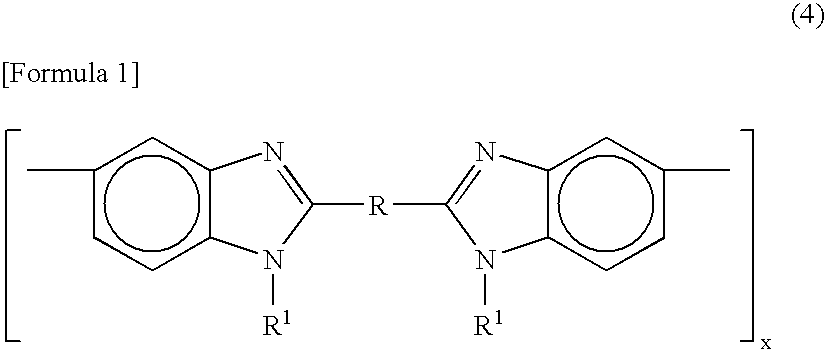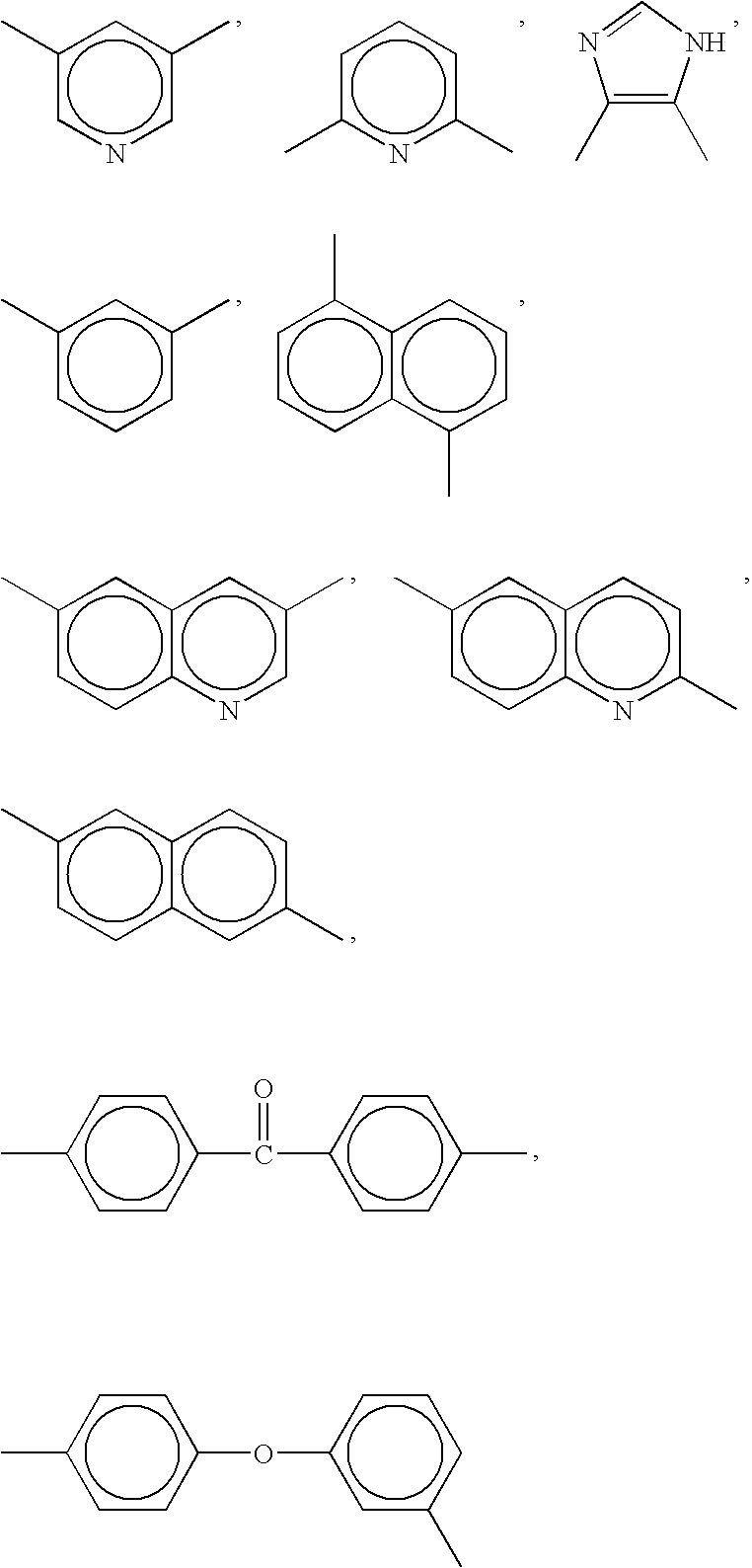Highly Durable Electrode Catalyst Layer
- Summary
- Abstract
- Description
- Claims
- Application Information
AI Technical Summary
Benefits of technology
Problems solved by technology
Method used
Image
Examples
example 1
[0167] The example will be illustrated below. In this case, a highly durable electrode catalyst layer was used which was composed of perfluorocarbon sulfonic acid resin (hereinafter, “PFSA”) represented by [CF2CF2]0.812—[CF2—CF(—O—(CF2)2—SO3H)]0.188, poly[2,2′-(m-phenylene)-5,5′-bibenzimidazole] (hereinafter, “PBI”) sodium salt (hereinafter, “PBI-Na”) as a polyazole-based compound, and a platinum catalyst-loaded carbon as a composite particle, wherein the composite particle / PFSA / PBI-Na weight ratio was 70.2 / 29.5 / 0.3.
[0168] First, the methods for producing the PFSA and dissolving the PFSA in a protic solvent will be described.
[0169] A perfluorocarbon polymer (MI: 3.0) consisting of tetrafluoroethylene and CF2═CFO(CF2)2—SO2F was synthesized as a precursor polymer for the PFSA. Then, using an extruder, the synthesized polymer was extruded from a round mouthpiece at 270° C., and cooled with room temperature water. The polymer was then cut into cylindrical pellets of 2 to 3 mm in diame...
example 2
[0181] A membrane electrode assembly will be described below, which was fabricated using the same anode catalyst layer and cathode catalyst layer as produced in Example 1, and the following polymer electrolyte membrane.
[0182] 37.3 g of the above-described perfluorocarbon sulfonic acid resin solution (AS1) was evenly spread over a 20 cm wide and 20 cm long petri dish made from SUS 316, and then dried over a hotplate for 2 hours at 80° C. The resultant membrane was then further heat treated for 1 hour at 180° C. in a hot-air oven. After cooling, the membrane was peeled off from the dish, and then dipped for 8 hours in an aqueous 2N hydrochloric acid solution (manufactured by Wako Pure Chemical Industries, Ltd.) having a temperature of 25° C. The membrane was washed with acid, and then thoroughly washed with ion exchanged water. The membrane was subsequently dried under a 25° C., 35% RH environment, to thereby obtain a transparent, 50 μm thick polymer electrolyte membrane.
[0183] Usin...
example 3
[0185] An example will be described below. In this case, a highly durable electrode catalyst layer was used which was composed of the same PFSA, PBI-Na, and a composite particles as in Example 1, wherein the composite particle / PFSA / PBI-Na weight ratio was 68.2 / 29.2 / 2.6. This highly durable electrode catalyst layer was produced using the following electrolytic polymer solution B.
[0186] First, an alkali metal hydroxide and PBI were dissolved in the following manner in a protic solvent. Specifically, 0.0324 g of PBI (manufactured by Sigma-Aldrich Japan K.K., having a weight average molecular weight of 27,000) was dipped into a mixed solution consisting of 0.1394 g of aqueous NaOH of 16% by weight and 10 g of ethanol, and the resultant solution was stirred for 1 hour while heating at 80° C. Once the PBI had dissolved in the solvent, 5.3487 g of ethanol was added, to thereby obtain a red-brown polybenzimidazole solution. This solution is referred to as polyazole resin solution (BS2).
[0...
PUM
| Property | Measurement | Unit |
|---|---|---|
| Fraction | aaaaa | aaaaa |
| Percent by mass | aaaaa | aaaaa |
| Percent by mass | aaaaa | aaaaa |
Abstract
Description
Claims
Application Information
 Login to View More
Login to View More - R&D
- Intellectual Property
- Life Sciences
- Materials
- Tech Scout
- Unparalleled Data Quality
- Higher Quality Content
- 60% Fewer Hallucinations
Browse by: Latest US Patents, China's latest patents, Technical Efficacy Thesaurus, Application Domain, Technology Topic, Popular Technical Reports.
© 2025 PatSnap. All rights reserved.Legal|Privacy policy|Modern Slavery Act Transparency Statement|Sitemap|About US| Contact US: help@patsnap.com



